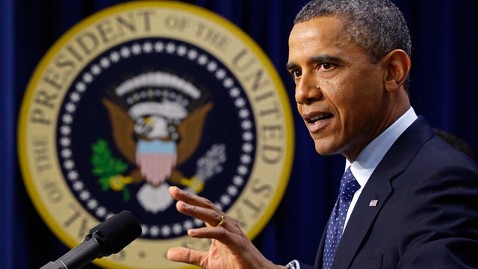While Hillary Clinton was in the hospital it was daughter Chelsea -- not the secretary of state or the former president Bill Clinton -- who spoke for the family.
She, along with the State Department, doled out what little information the family wanted to share in a series of tweets and when her mother was released from the hospital, it was Chelsea who delivered the thanks on behalf of her parents, tweeting her gratitude to the doctors as well as those who kept her mother in their thoughts while she recovered from a blood clot.
When Hillary Clinton leaves office, possibly at the end of this month, it will be the first time since 1982 that a Clinton will not be holding a public office.
The watch will be on whether Hillary Clinton makes another run for the White House in 2016, but almost inevitably people will also be watching to see if Chelsea Clinton decides to run for office, too.
"Americans always look for dynasties: Bush, Kennedy, Cuomo, Clinton … it's some kind of continuity. There will always be pressure on her to run for public office," said Hank Sheinkopf, a Democratic political strategist in New York.
"She's learning from the two best politicians in recent American history and she understands when to hold them and when to fold them," Sheinkopf said.
That sense of dynasty could also present a significant hurdle.
James Devaney/Getty Images
Secretary of State Clinton: Mystery Health Issues Watch Video
Secretary of State Hillary Clinton Undergoing Blood-Thinning Therapy Watch Video
"She's got to A, demonstrate that she has the charisma of her father, or B, demonstrate that she has the policy chops of her mother. And I think like most people she is somewhere in between," a former Hillary Clinton aide from her 2008 campaign said. "People are judging her through each of her parents and it's an impossible standard."
Chelsea Clinton, 32, has inched towards a possible political career in recent statements and has become more politically active.
In an interview with Vogue published in August she was more open to it than she has been in the past, telling the magazine, "Before my mom's (presidential) campaign I would have said no," but "now I don't know."
"I believe that engaging in the political process is part of being a good person. And I certainly believe that part of helping to build a better world is ensuring that we have political leaders who are committed to that premise. So if there were to be a point where it was something I felt called to do and I didn't think there was someone who was sufficiently committed to building a healthier, more just, more equitable, more productive world? Then that would be a question I'd have to ask and answer."
Clinton also spoke of a change in her private to public life:
"Historically I deliberately tried to lead a private life in the public eye," she told the magazine. "And now I am trying to lead a purposefully public life."
Besides her work as a special correspondent with NBC, Chelsea Clinton has taken on high profile roles with her father's Clinton Global Initiative. She sits on several corporate boards and has both moderated and sat on panels discussing both women in politics and childhood obesity, among other issues.
She has also worked toward making same-sex marriage legal in New York last year, as well as gay marriage referendums in Maine, Maryland, Wisconsin and Washington state, all of which were successful in November. She has also been active in superstorm Sandy recovery, most notably delivering aid to the devastated Rockaways with her father.










